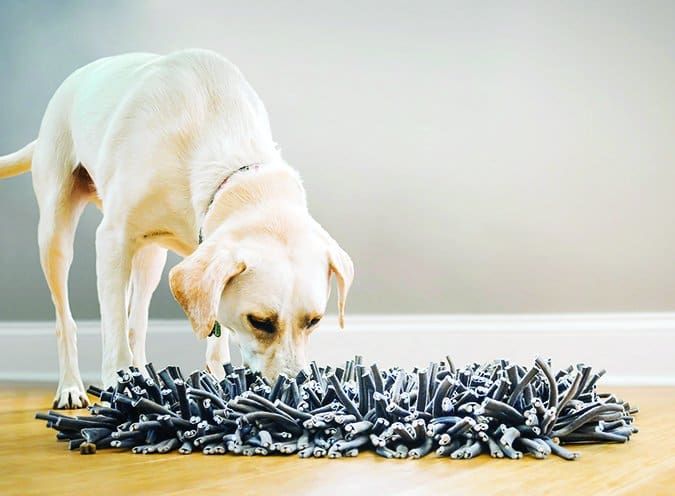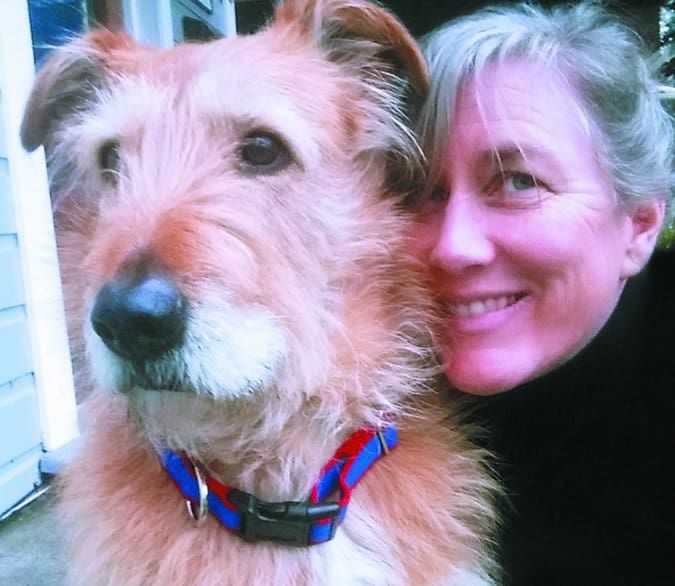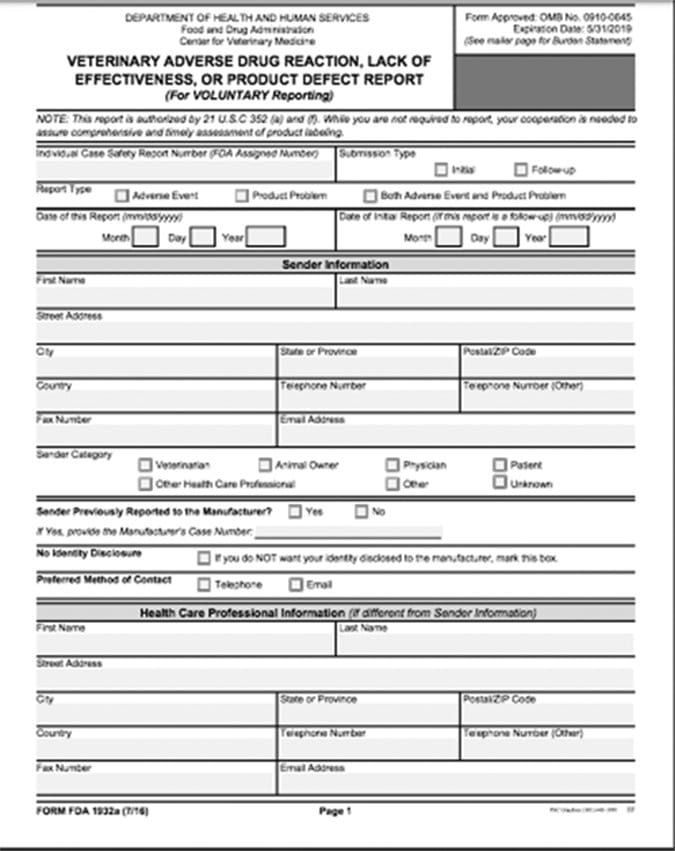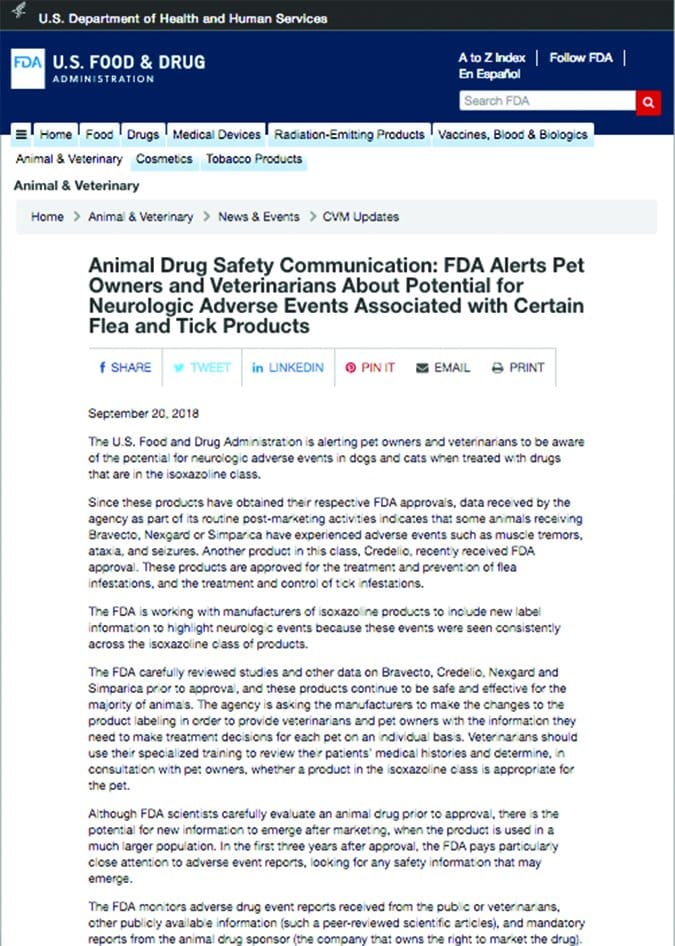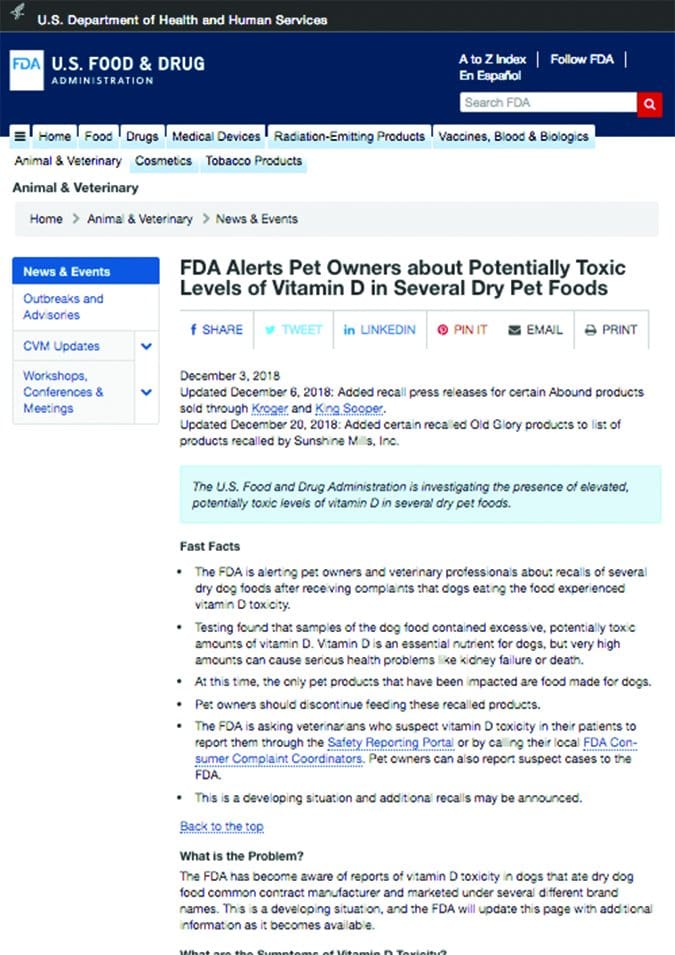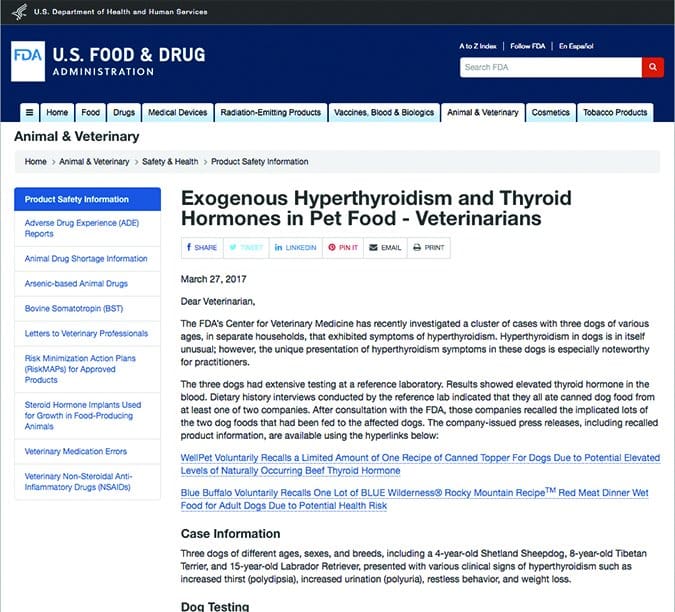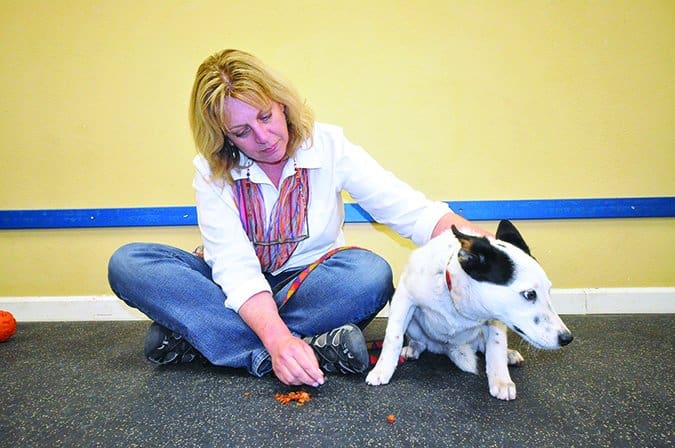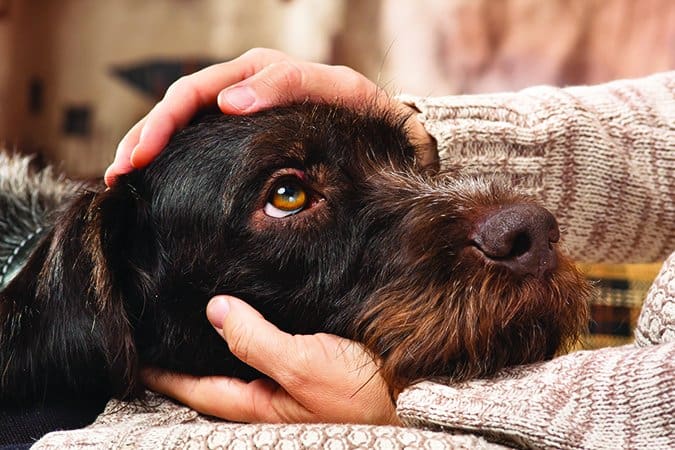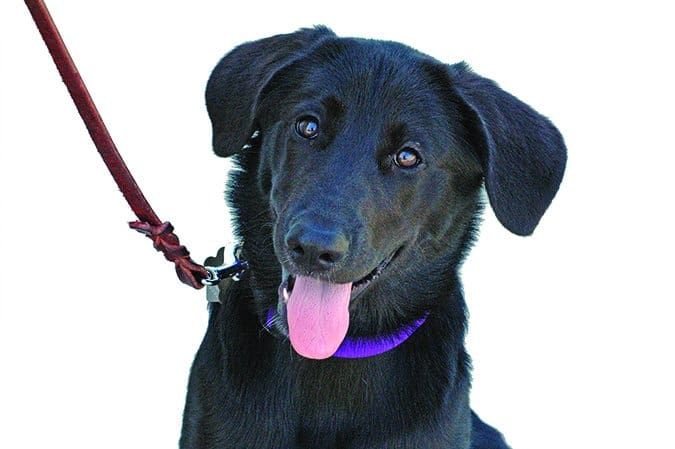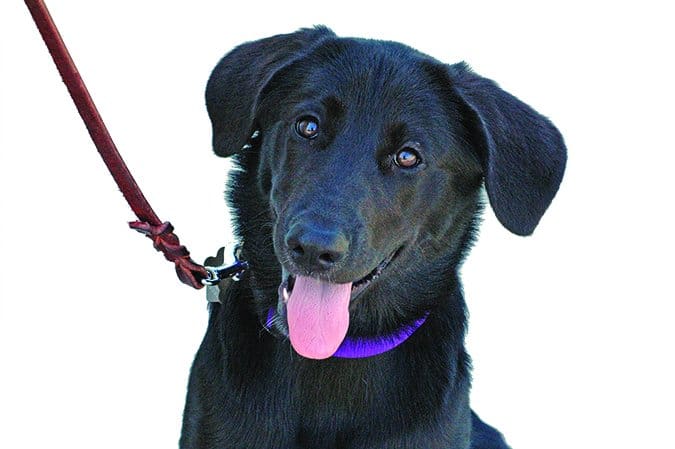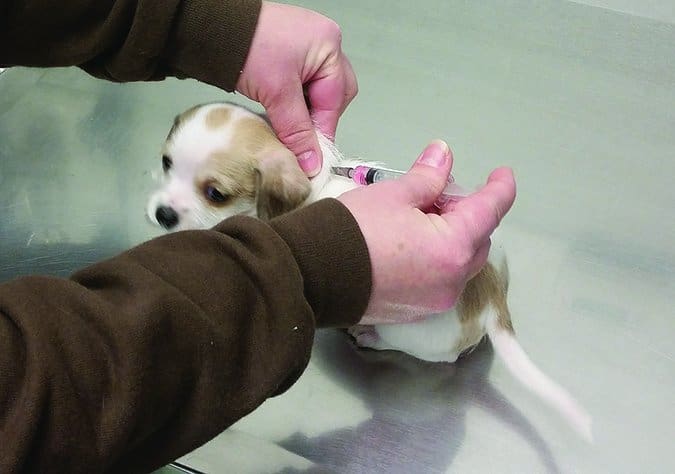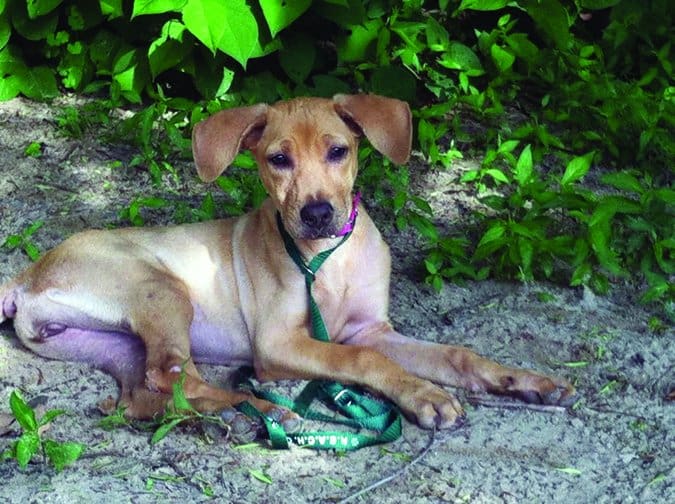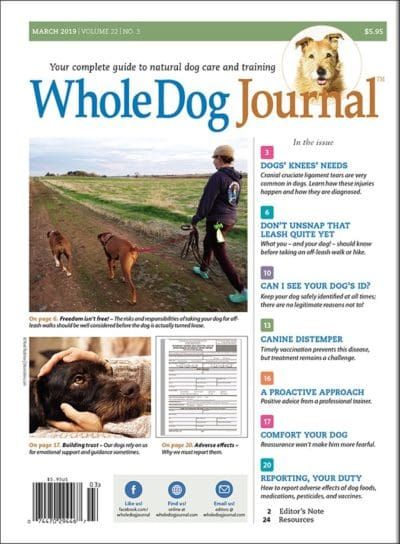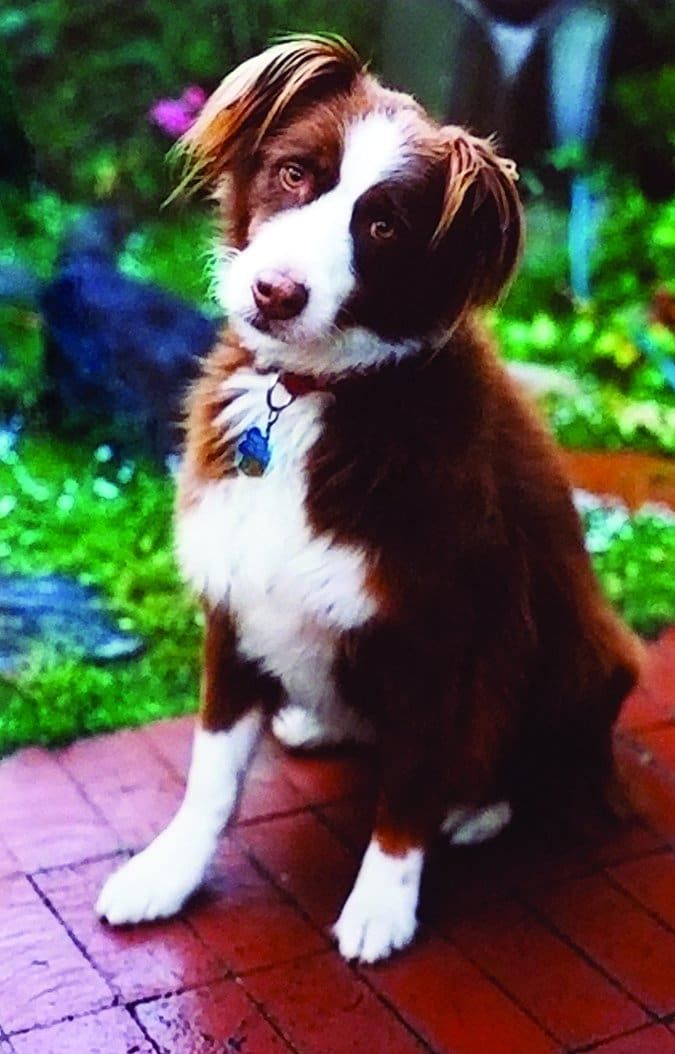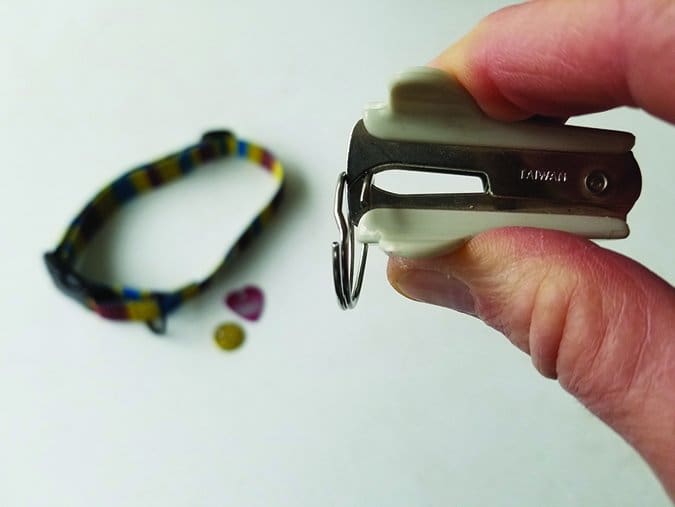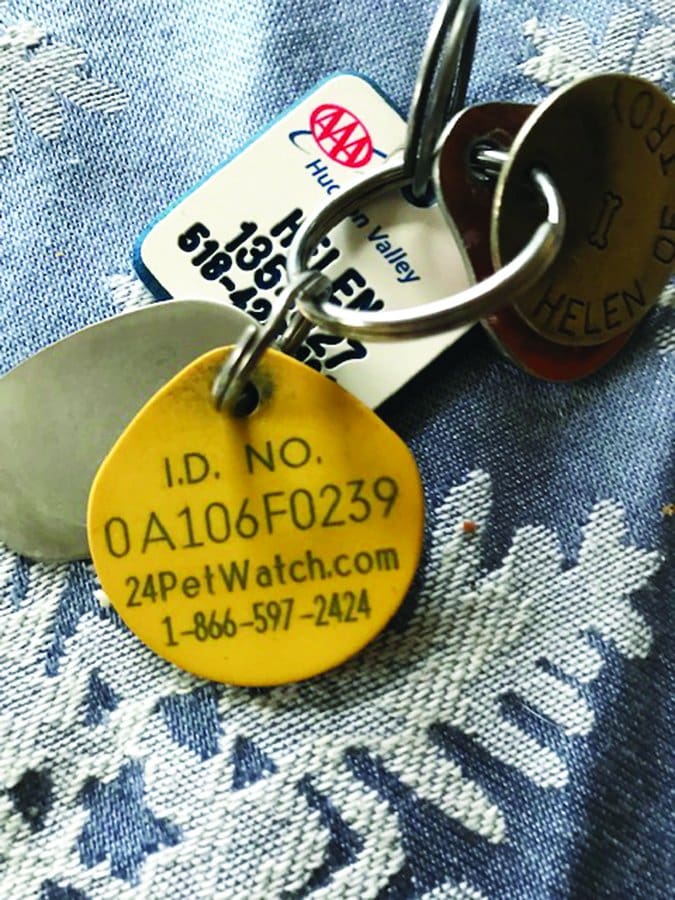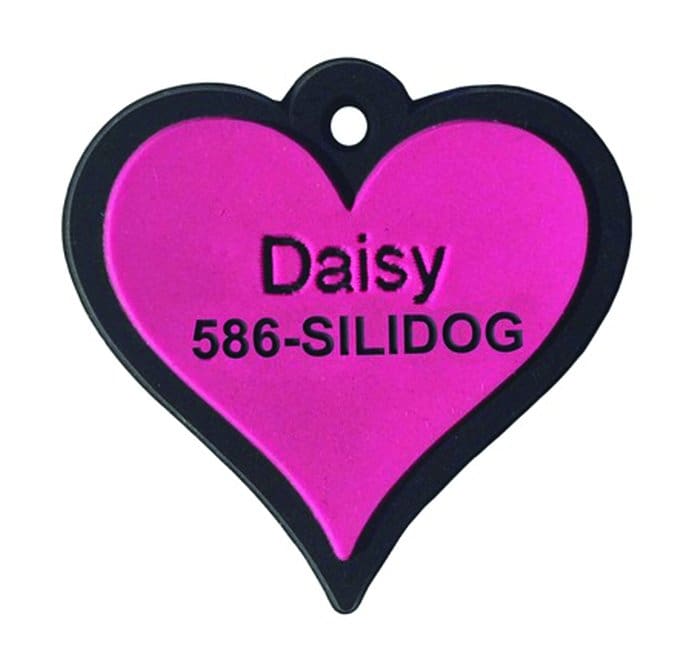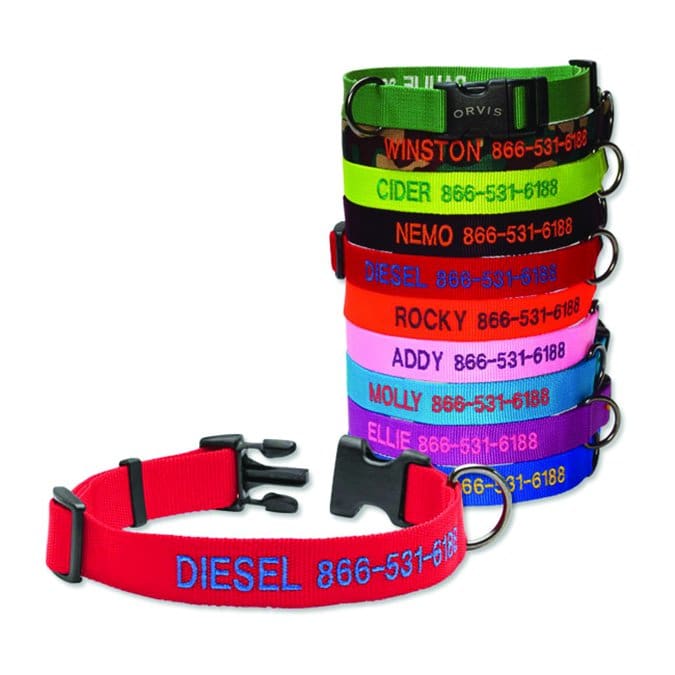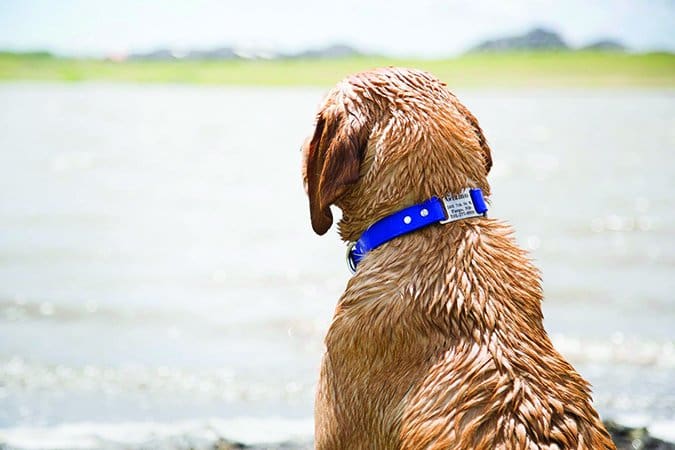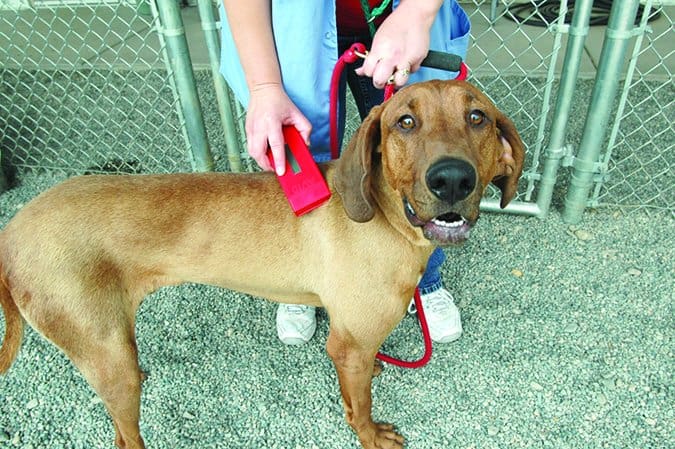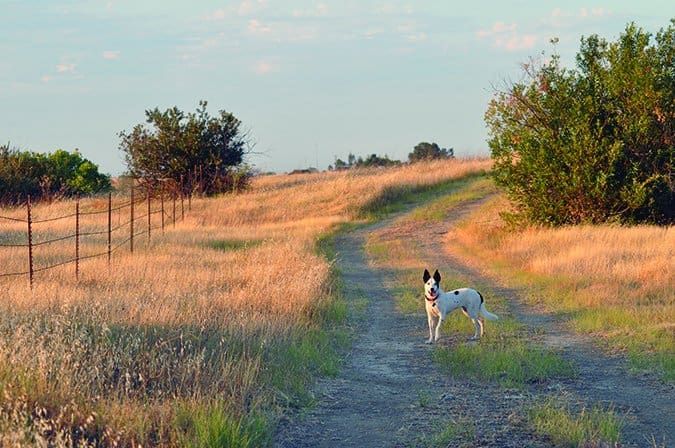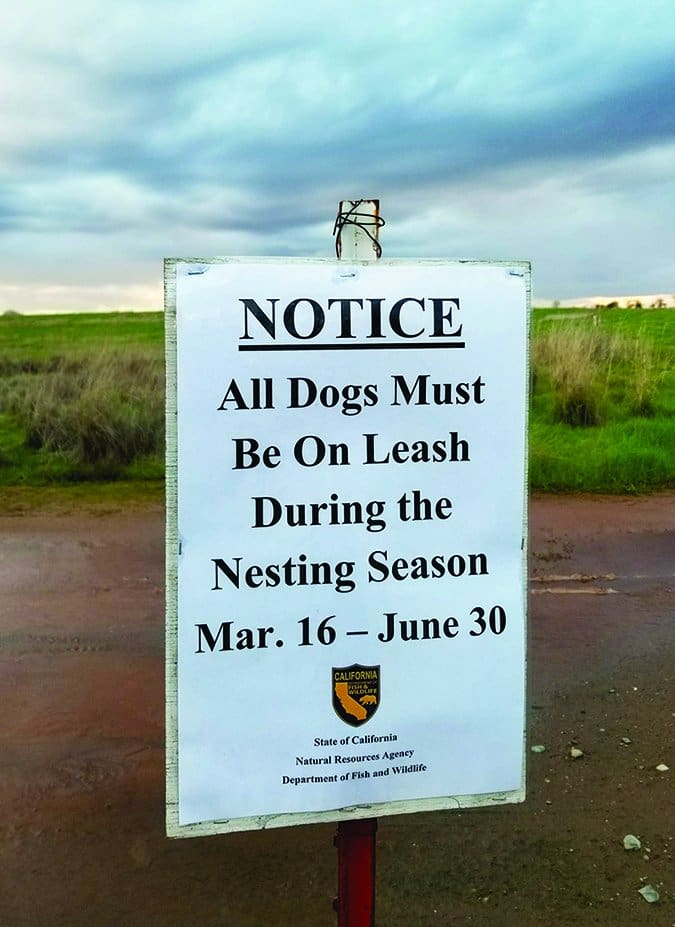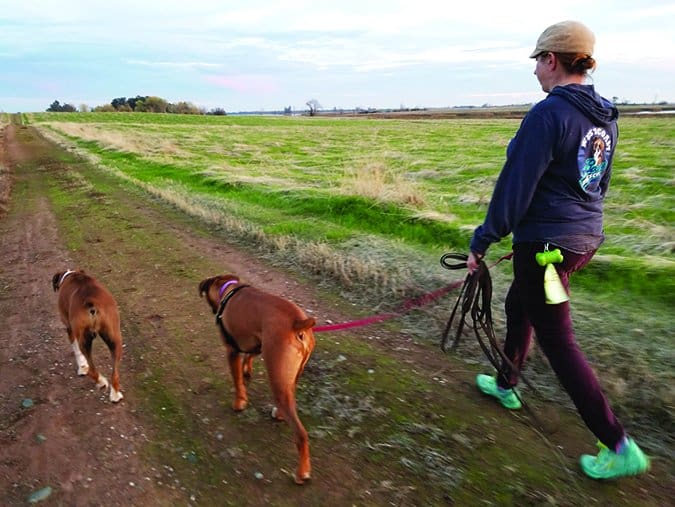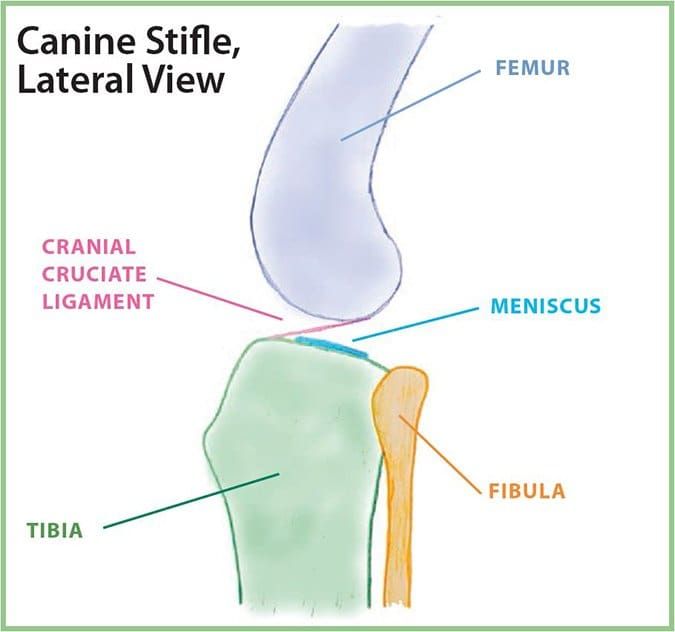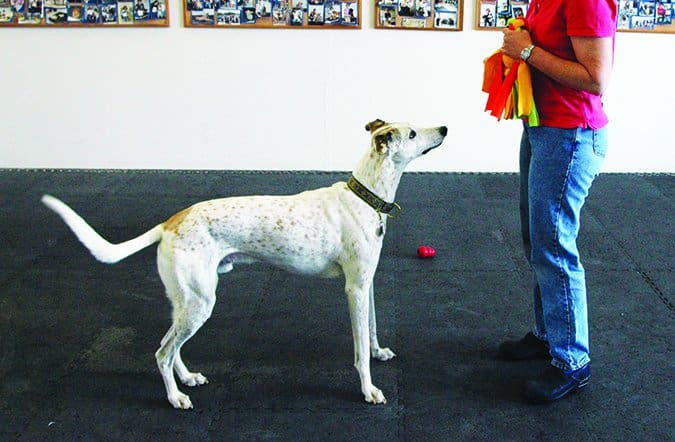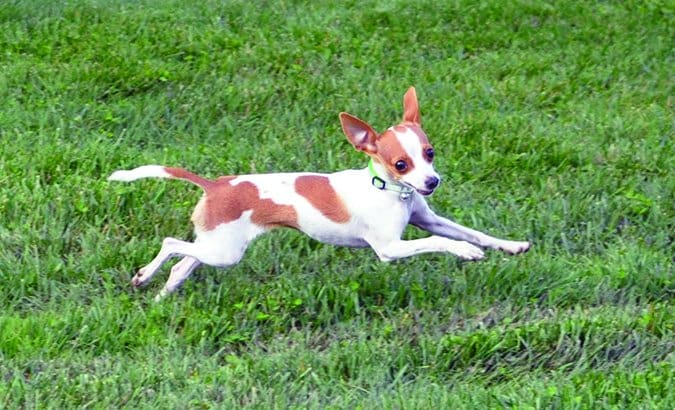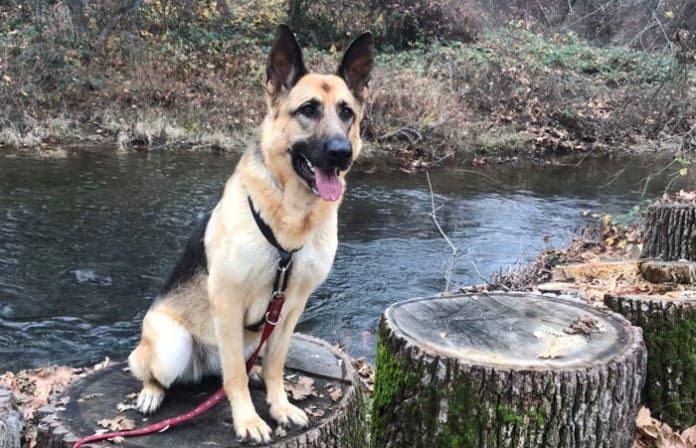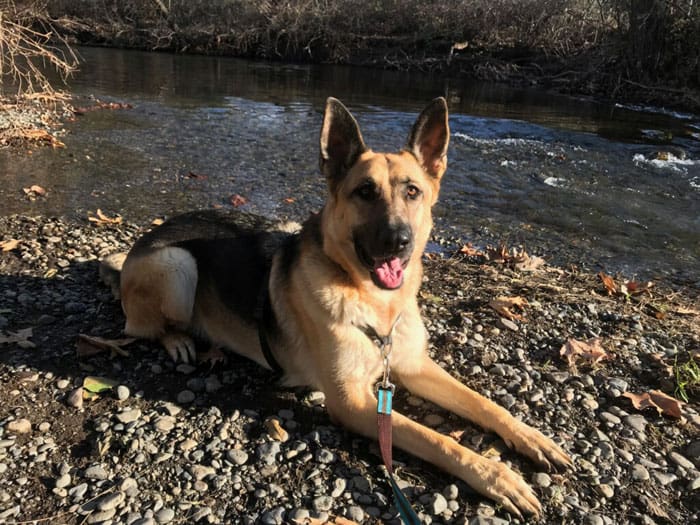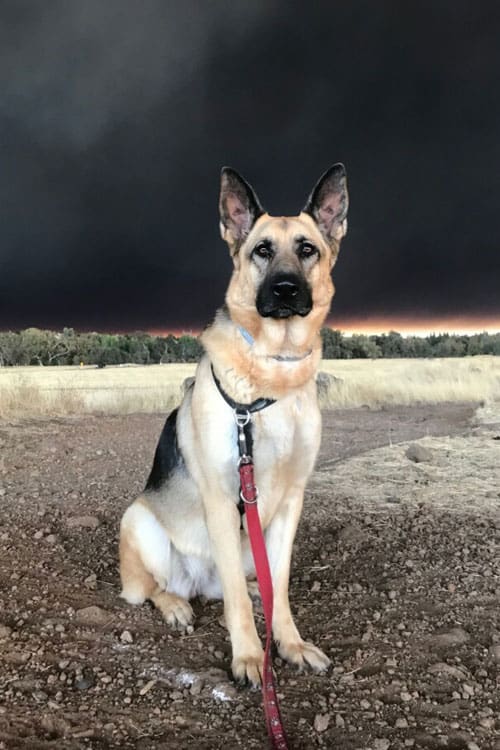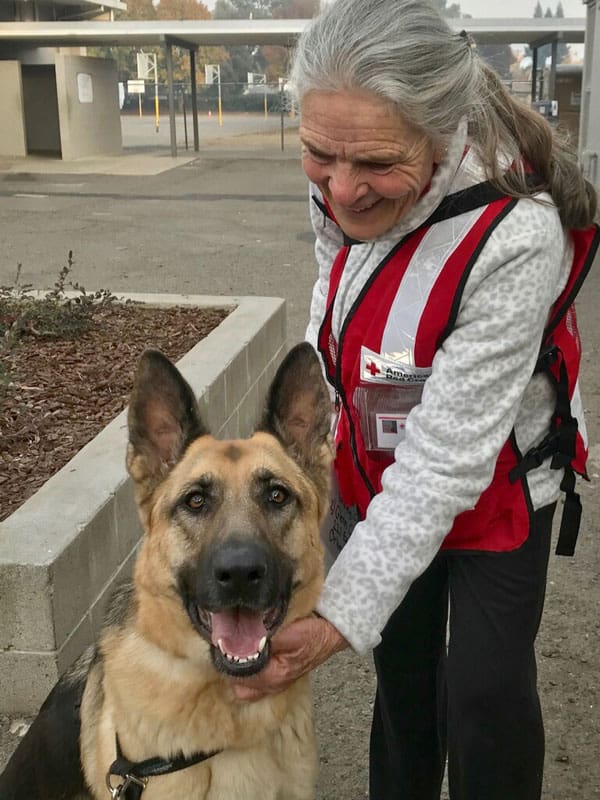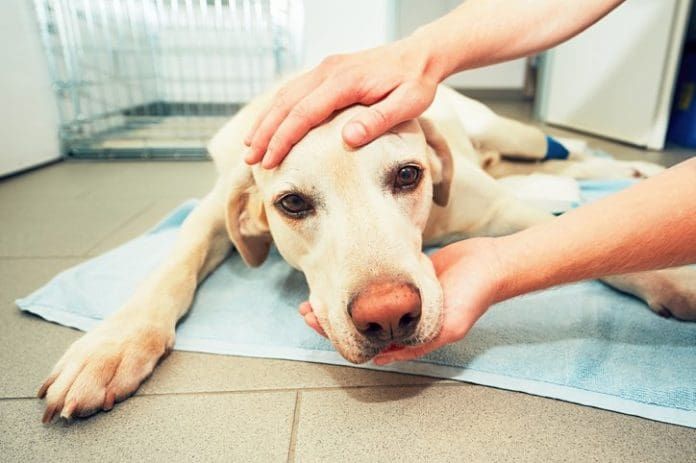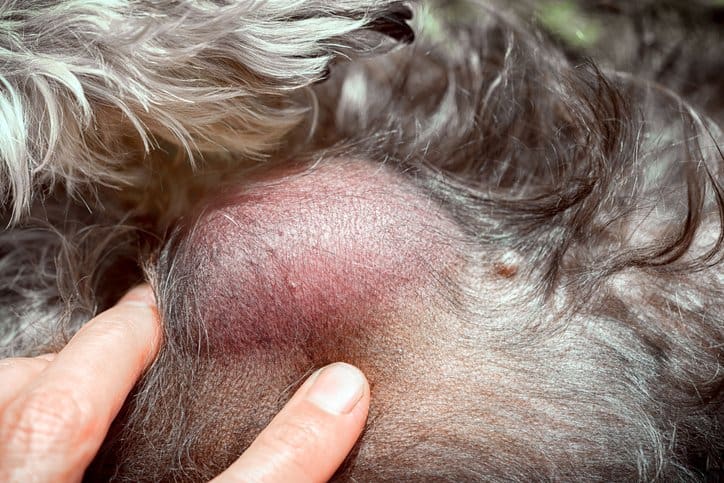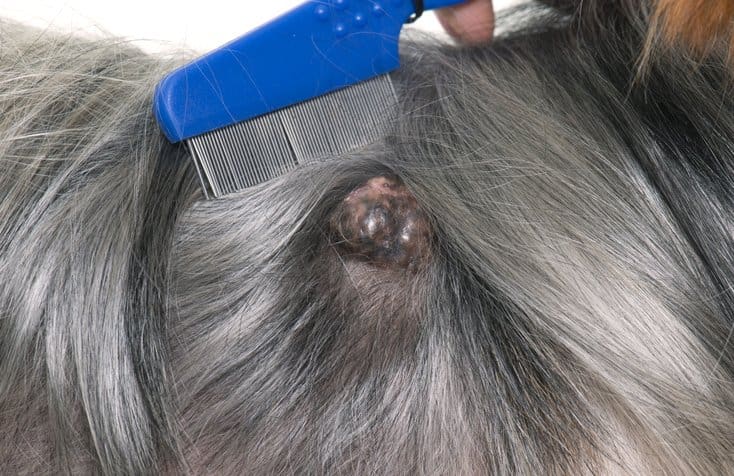The whole world is aware that we love to buy stuff for our pets; more than $70 billion was spent by U.S. owners on their pets last year. But we have to say that a lot of that spending was a waste! There are tons of cutesy, low-quality products out there that fail to deliver any real benefit to either dogs or their handlers. That’s where we can help, with five pages of top-quality stuff that you and your dog will truly enjoy.
Brahma Lead XS $20 – $67
Bold Lead Designs
Aurora, CO
(303) 856-3012
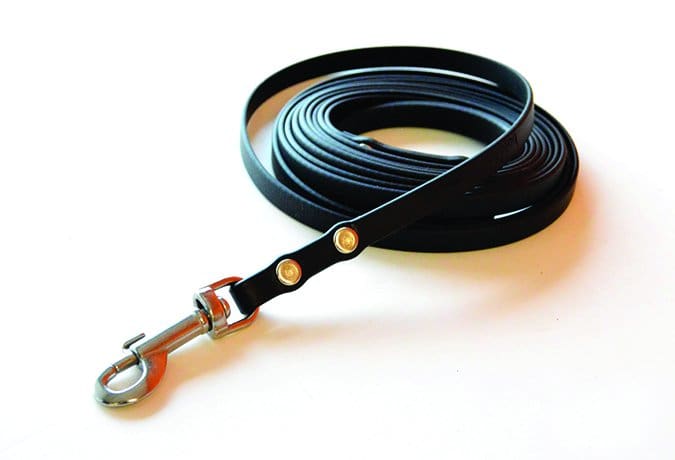
Benni (seen in the snow below) is my first small-sized dog in decades. I like to do the same activities with him that I did with my big dogs. But I discovered it can be hard to find quality products for active little dogs. Most small-dog items lean toward cute and not necessarily useful. This is especially true for leashes.
Because we walk in the woods year-round, we need a long leash that can withstand being dragged through creeks, mud, and snow. Nylon isn’t the best choice for these types of adventures, and while leather is tough, it can get dirty and stiff and is hard to dry.
Enter Bold Lead Designs’ Brahma XS leash. It’s made of a man-made, leather-like material that wipes clean and dries immediately. It’s super flexible and soft enough to comfortably handle with bare hands. This is an important feature when you’re handling a long line. Nothing stings like a nylon leash sliding through your hands! The Brahma also has sturdy hardware (your choice of stainless steel or solid brass) – not the cheap stuff that falls apart in cold temperatures – secured with rivets.
But the main reason this brand is my favorite is because all of this comes in a regular (1/2-inch), wide (3/4-inch), and a small-dog package: 3/8-inches wide and with a smaller-sized fastener. I haven’t been able to find anything else this sturdy in such a nice small size.
Bold Lead Designs offers the Brahma Lead in nine standard lengths (from four to 50 feet) and with four different types of “end”: a regular loop handle, no handle (straight end), a handle loop with a loose ring, and a fixed O-ring. I have two of these leashes – a 12-ft and a 30-ft length. They’re easy to coil up and won’t kink.
I’ll admit they are pricey, but after more than a year of daily use, they still look and feel brand new. I’ll never go back to nylon for long lines! – Nancy Tucker
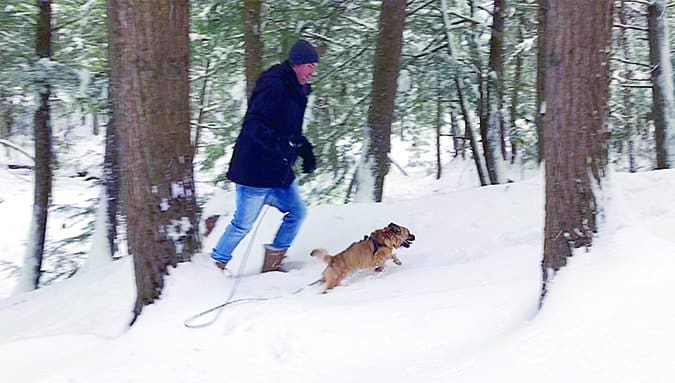
Stella & Chewy’s Meal Mixers 16 oz. $39
Stella & Chewy’s
Oak Creek, WI
(888) 477-8977

These are not new. But I simply can’t be without them, whether I’m training my own dogs, meeting and assessing shelter dogs as a volunteer, or feeding a sick foster dog or puppy back to health. And I’ve yet to meet a dog who will turn up his nose at this puffed-up, crumbly treat.
Meal Mixers are grape-sized nuggets of raw, freeze-dried muscle and organ meat, raw ground bone, and organic vegetables. They can be fed as a complete and balanced diet (suitable for dogs of all life stages), a highly palatable food “topper,” or a motivating and rewarding treat. I rehydrate and feed them as my secret remedy for transforming sick, inappetent dogs into healthy, hungry, happy ones. – Nancy Kerns
Hurtta Active Harness $40
Hurtta North America
West Palm Beach, FL
(561) 227-4092
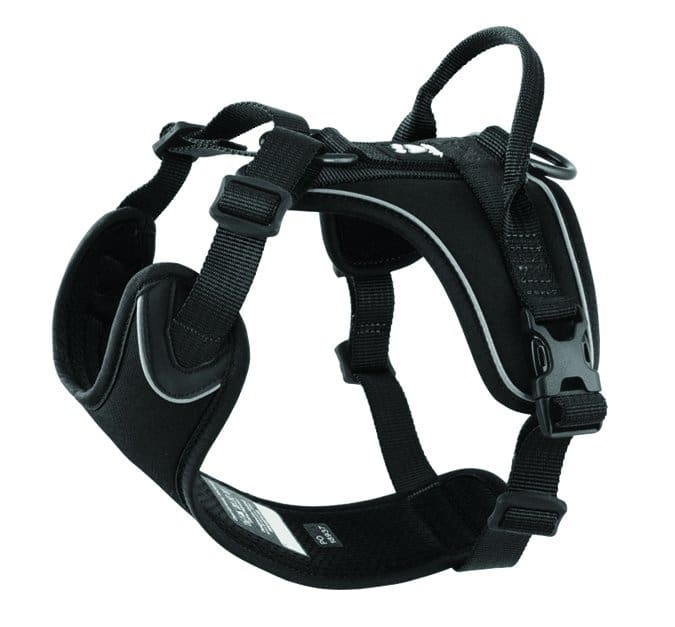
I hate to make my review of this harness all about the handle, because overall, it’s designed beautifully, padded for the dog’s comfort, easy to adjust for a perfect fit, and durable. It has a nice, big ring for attaching a leash at the back of the harness and reflective strips that help your dog be seen at night. My dogs have worn this model daily for a few years and despite this hard use, and though they have been washed in a washing machine several times, they are still in great shape. A similar-looking harness made by a competitor fell apart under less than half the duress.
But it can’t be denied that the handle has been enormously useful to me. It helped when my older dogs started having mobility issues and needed occasional help upon rising, on stairs, and getting in and out of the car. It helped the Border Collie with a bum leg who I adopted, and it helped even more after my veterinarian amputated the problem leg and the exuberant young fetch addict was finding his way as a new “tripod” dog. And it’s currently helpful when my young canine athletes lose their footing on a steep hillside or otherwise need a hand – which may be a uniquely mountain dog problem!
But it’s not just me: A friend uses the same harness to quickly lift her reactive small dog off the ground and whisk him to safety when they are unexpectedly accosted by an off-leash dog and the feisty terrier-mix takes extraordinary offense. It’s quite literally a life-saver! – Kathryn Socie-Dunning
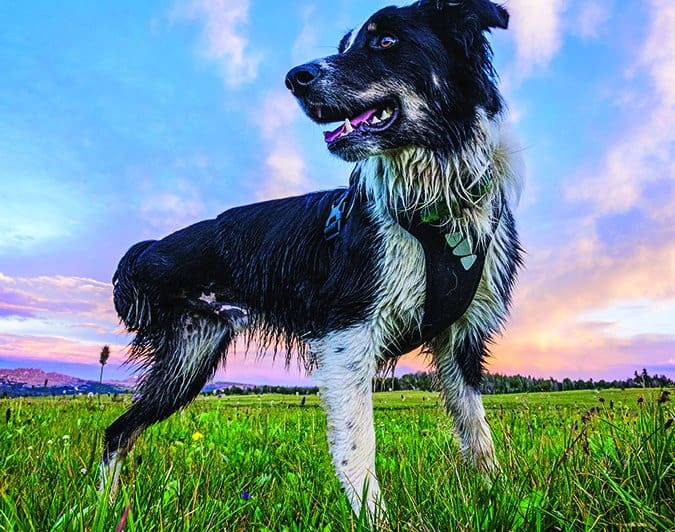
Posture Pedic Pet Mat $35 – $70
Alden Odor Solutions
Alden, IL
(866) 364-6367
It sounds a little strange, but the best mats I’ve ever found for padding my dogs’ crates come from a company named and known for their pet deodorizing products. I’m not sure how they got into the pet bed business, but I’m glad they did. This is the only bed I will use in a crate, because they are both super comfortable for my dogs and virtually indestructible.
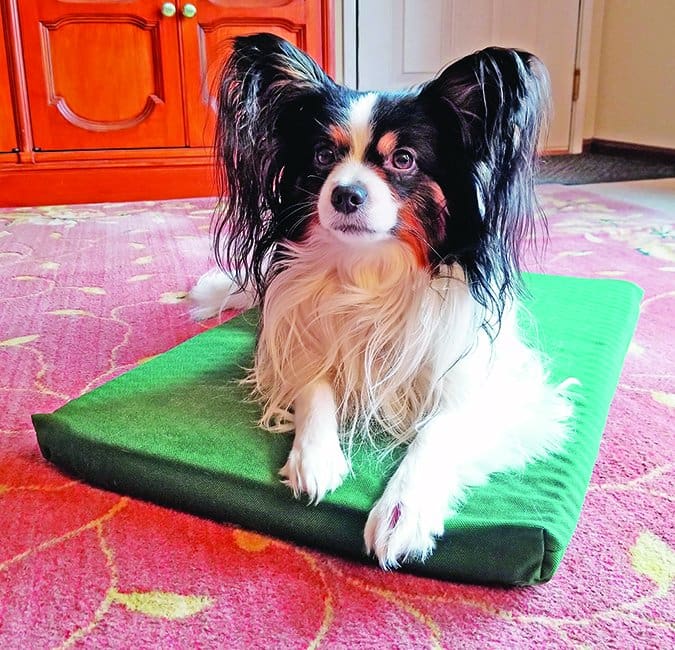
Now it’s true: I have small dogs. But my Papillons go to town scratching on them at times – like, full-force try-to-dig-to-China scratching – and the pads never show a mark. And my sister is still using the one she purchased for her Labrador almost a decade ago.
The mat’s closed cell memory-foam insert is protected by a tough Cordura cover. The covers can be washed, and take washing and drying in the dryer well, though it always seems like they’ve shrunk when it is time to re-insert the foam core – but they haven’t! It’s just that the cover fits the foam tightly. I roll the foam up a little (in a U-shape), push that into the cover, then flatten it out and zip it up.
Alden Odor makes the pads in standard crate dimensions so they fit just as tightly in crates as in their own covers, so that it’s difficult for a dog to pull up the mat and chew on it. The mats come in nine sizes, from Petite (12″ x 17″) to Giant (28″ x 48″).
I just can’t say enough about the quality of the memory foam insert; it’s very supportive. Sometimes my tired little agility dog asks to go in his crate, so he can lie down on that mat. I’d even pay more for such a great product, though I’m happy that I don’t have to! – Cynthia Foley
The Dogger $270
Dog Quality
100 Mile House, BC
(866) 297-5979
When my Norwich Terrier Ella was nearing her 13th birthday, she started slowing down. She could sometimes do our regular two-mile walk at a trot, but other times she would slow to a walk partway through. I wanted to get a stroller so that when she got tired, I could put her in the stroller and my younger dog and I could continue walking at a good pace. The problem was that every stroller I looked at was made in China and the reviews indicated that they would start falling apart within six months. Most also had hard, plastic wheels that created an uncomfortable ride.
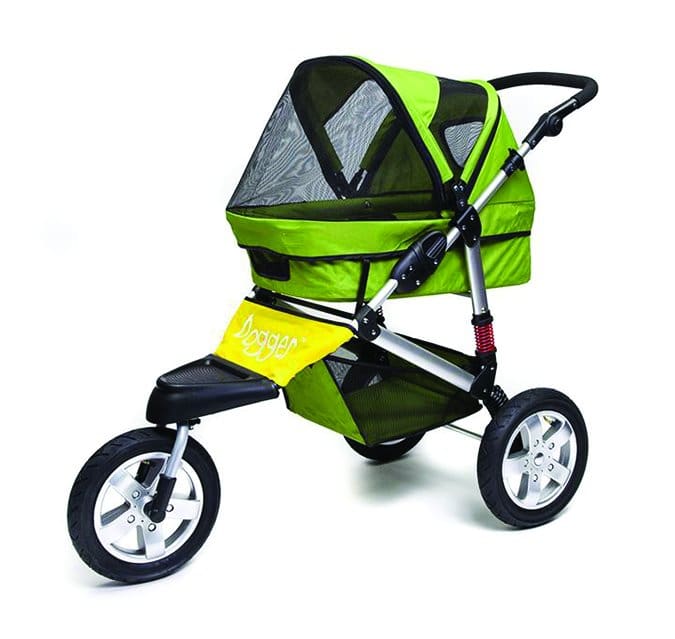
Then I discovered the Dogger from Dog Quality, a Canadian company that makes their own strollers. I wanted this stroller so badly that I waited an extra month while they were out of stock.
When it arrived, I couldn’t believe the quality. The large (12″) air-filled tires and shock absorbers create a smooth ride, even when I take the stroller onto trails. It rolls easily – I can push it with one finger when there’s no dog inside – and maneuvers exceptionally well. It comes with just about everything you need, including a storage basket underneath, rain cover, and a canopy that can be adjusted in multiple ways (parts can even be removed if desired). The only extras I purchased were a drink holder with multiple compartments that I also use for storing leashes and poop bags, and an orthopedic pad for an additional $10.
At $270 (including shipping), this stroller costs about $100 more than the cheap Chinese versions but will last forever. If a part does wear out or get damaged, you can buy just the replacement part instead of having to get a new stroller. The company offers a 15 percent discount to you and anyone you refer who also purchases one.
One day a woman who was driving by pulled over to tell me that she had used the same stroller for seven years and it still looked just like new; the only thing she had replaced were wheels, which they make exceptionally easy to do. I’ve had mine for a year and a half now, and the only maintenance I’ve had to do is put air in the tires (easily done with a bicycle pump).
Ella enjoys her stroller, which can hold up to 60 pounds and is large enough for two or more small dogs. The Dogger also folds down easily for transport in a car. – Mary Straus
Martingale All-in-One $60
Four Paw Fun
Port Orchard, WA
(360) 876-2426
When we put out a call to our friends and contributors, asking them for “gear of the year” product recommendations, the one that made me want to order the minute I saw a product photo was the Martingale All-in-One, which was enthusiastically put forward by Aditi Joshi, a street dog advocate from Mumbai, India (and who was featured in Whole Dog Journal‘s August 2018 issue).
Aditi looks out for the health and well being of about 70 dogs in her neighborhood, taking them into her home when they need minor nursing care for injuries or parasites, and taking them to veterinary clinics when they need more advanced care. Her tool of choice when she needs to quickly collar and lead a street dog into a taxi or into her home? The Martingale All-in-One collar/leash combination. She received one as a gift from a friend in the U.S., and uses it daily.
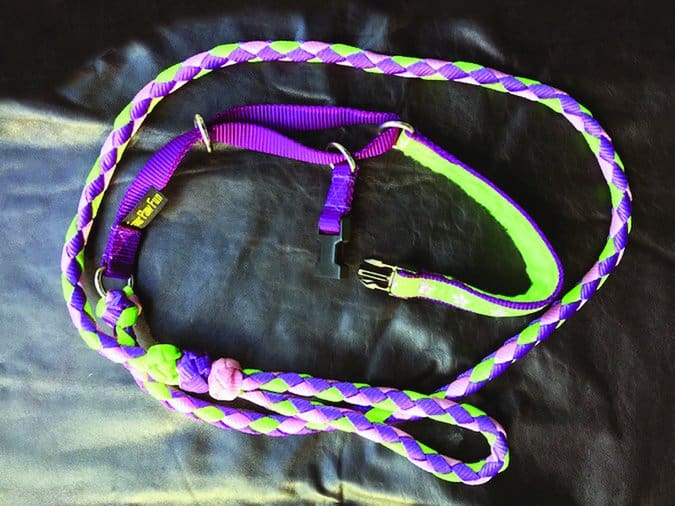
What’s so great about it? Well, first, it’s a “limited slip” or martingale collar. This means that the collar fits loosely, unless a dog tries to slip out of the collar or pull away. Then it tightens, but only as much as needed to prevent it from slipping off the dog; it can’t tighten enough to choke the dog like regular, full slip leads can if the dog panics and fights the restraint.
Most other limited-slip collars, however, are put on the dog by sliding the loop of the collar over the dog’s head. This one has a plastic buckle, which means a handler can slide it over the dog’s head or, with dogs who are frightened or wary of being “lassoed” by a loop, the handler can tactfully pet the dog with the unfastened collar and buckle it when she is able.
I often use leather slip leads as a volunteer at my local shelter, because few of the shelter wards wear collars and slipping a loop over their heads is fast and simple. If any of them panic and dig in their heels, we have to stop and jury-rig a knot so that the leash doesn’t tighten so much that they are even more frightened by being choked, but one that is not so tight that they can slip out of the collar and get loose.
In contrast, this collar/leash combination, with its nice, wide, padded collar; the limited slip feature; the handy six-foot leash length; and soft-yet-strong, hand-woven material, is going to be just the dog-walking tool I have wanted for years. Aditi says so! – N.K.
Wooly Snuffle Mat $40
Paw5
Philadelphia, PA
(215) 383-1654
Although an increasing number of dog lovers are familiar with the concept of snuffle mats, these fantastic dog accessories are still not nearly as widely known and used as they deserve to be. If you’ve never tried one, you and your dog are in for a treat – literally.
The basic concept of the Snuffle Mat is simple. Take a durable surface that has lots of nooks and crannies, load it with treats (or use it to feed him his regular meals), and let your dog ferret out all the goodies. It’s fun, it invites him to use his nose (which most dogs love!), it keeps him busy, and uses up excess canine energy (scent work is surprisingly tiring).
It’s also a perfect solution for the dog who inhales his food – he has to slow down his intake as he searches for food bits. In addition, Snuffle Mats are easily portable, so you can take them with you when you and your canine pal are visiting friends and family, hanging out at your kids’ softball games, or when you need to keep your vocal, high-energy dog quietly and happily occupied during down times at training class.
There are numerous snuffle mat options, from simple make-it-yourself varieties to our favorite, the Paw5 Wooly Snuffle Mat. The Wooly is durable and washable, and its unique rounded fingers facilitate easy treat stashing. [Editor’s note: My pit-mix Woody has been eating from the same one for three years, and it’s gotten a tad less “wooly,” but still does the trick. I machine-wash and -dry it about every three to four weeks.]
A Google search turns up several other brands, including at least one that has other treat hiding/finding options in addition to the snuffle stuff. Check them out and give one a try. – Pat Miller
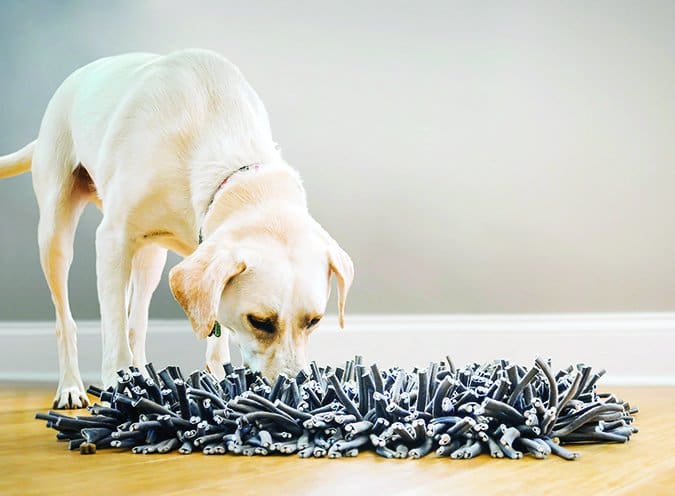
The Peekeeper $40
My old dog Ella does a lot of peeing these days (she was diagnosed with early-stage kidney disease) and has accidents in the house if I’m not diligent about taking her out consistently. I ended up buying a doggie diaper for her, but I’ve only had it on her a couple of times, as I can keep the accidents under control if I make sure to take her out a lot. But what about when I have to be out of the house for longer than Ella can hold it?
A friend recommended the PeeKeeper – which is billed as the “only escape-proof dog diaper” – as the only diaper that stays on well. It has a unisex design, so it would work well to control urine-marking from males as well as incontinence.
The PeeKeeper is highly adjustable and fits well. It is easy to take on and off once you get the hang of it. Ella doesn’t seem to mind wearing it. You add the feminine or incontinence pad of your choice to absorb the urine, which gives you a lot of choices as to size, thickness, and absorbency.
The product is currently made only in sizes that would fit small to medium-sized dogs (no more than 40 pounds). It is made with 100 percent cotton, and can be machine washed and dried.
The company does not take phone orders but is responsive via email. – M.S.
Nudges Homestyle Chicken Pot Pie Treats $14
Tyson Pet Products
Springdale, AR
(877) 303-9247
You know how you’re supposed to keep the “high value” treats on hand for serious training? I like to have cooked chicken or turkey available, but sometimes it’s impossible because there’s nothing cooked or I ran out or they’re still frozen. And it’s always a problem for me to have real meat in my pockets (yuck).
Then someone told me about Nudges Homestyle Treats, in the Chicken Pot Pie flavor. My dogs go nuts as soon as they smell these treats. They come shaped like a pot pie but are easy to break apart so you can feed appropriately small pieces. Better yet, I can then shove the rest of the “pie” in my pocket with minimal crumbs.
I first thought the price was a bit much, but then I learned how long these treats last. They are sold in Target and Walmart stores, but unlike most of the treats in those outlets, Nudges have a reasonably healthy ingredients list, and no artificial colors, flavors, or preservatives.
Everyone I have recommended them to has loved them (and their dogs, too!). When I pulled one out at class, one of my agility friends said, “Wow! You brought the good stuff!” – C. F.
Ruff Tough Dog Kennel $135 – $330
Ruffland Performance Kennels
Tea, SD
(605) 368-9872
When I hit a patch of black ice on the highway and went spinning and crashing into the median (a few times), my dogs were loose in the car and obviously terrified. None of us were injured, thankfully, but it scared me enough to look into crates that are durable enough to stay intact and protect my dogs if I was ever involved in another wreck.
That’s when I discovered the Ruff Tough kennels. They are designed to take a serious beating and not skewer the canines inside them. They fit well in my car and are easy to load in and take out, if one wants to use them more than just in the car.
They are made of heavy-duty, high-density polyethylene and crafted with one-piece, molded construction, eliminating weak points and debris-collecting seams. They can be stacked without squishing the crate below, and there are built-in metal inserts that let you secure the kennels together; coupler kits are also sold separately that can join two kennels side-by-side.
They are sold with a one-year manufacturer’s warranty and come in six sizes, from small (16″ x 22″) to extra large (22″ x 40″). Ruffland does not sell the kennels directly, but their website lists local and online retailers.
It may sound odd, but crates made life with multiple dogs heaven. I can’t believe I never used them before, thinking a dog would hate me for putting them in one! In fact, my dogs will often go hang out in their crates by choice, which makes me enormously happy. It’s a space all their own and I somehow never grasped how important that is for most mammals, myself included – sometimes you just need a break.
Thanks to the crates, I can open up the car when it’s warm and they have a safe place to be. I can pull the crates out and set them up in the shade, so I can work one dog while the others are lounging comfortably. I can separate dogs while they chew raw bones quietly and never have to worry over sharp-toothed shenanigans arising. There’s more too, but I’ll stop there! – K.S.D.


